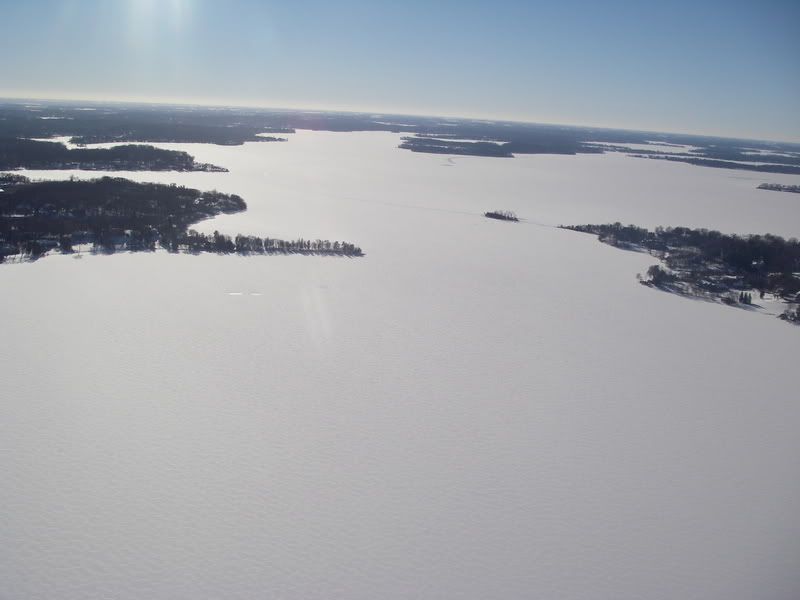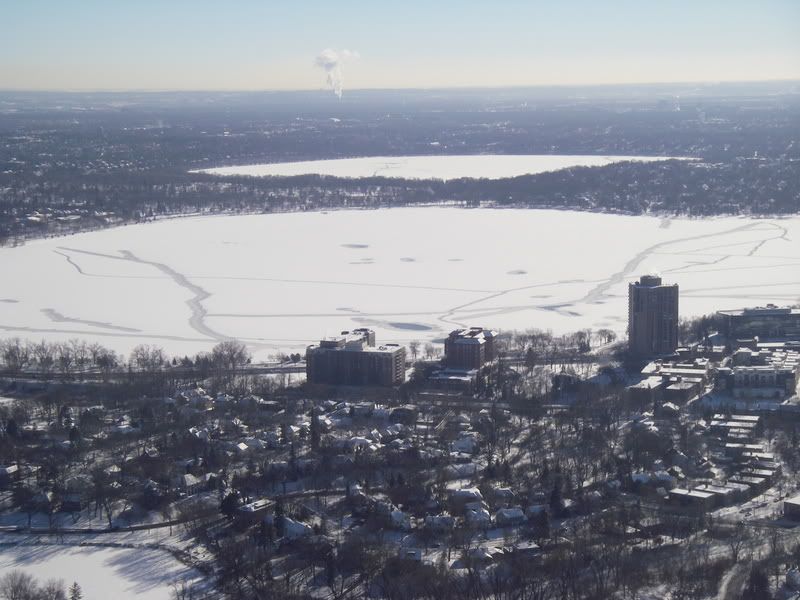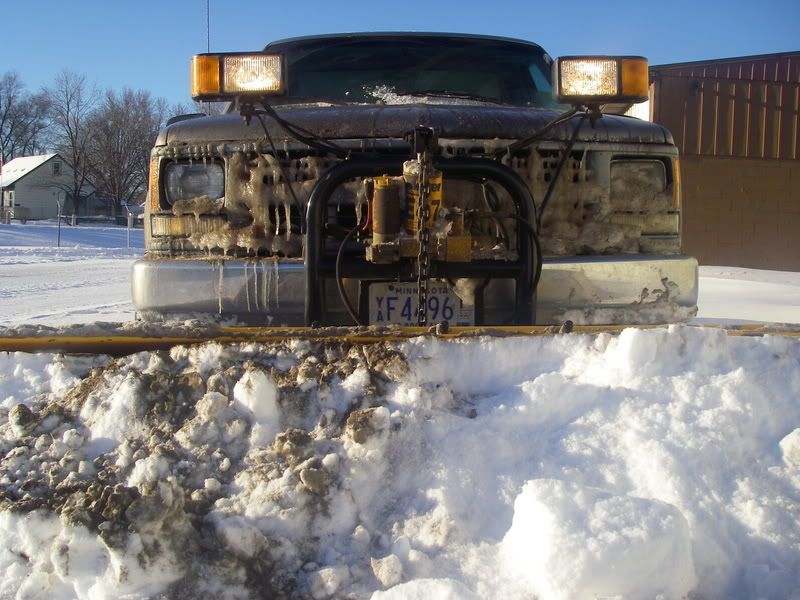It's not like Alaska isn't wilderness - it mostly is. But most Alaskans don't live in the wild. They live on the edge of the wild in towns with schools and cable TV and stores and dentists and roller rinks sometimes. It's just like anyplace else, only with mountains and moose. Tom Bodett
Monday, December 31, 2007
The New Year
Just a wish for everyone to have a new year full of happiness, and good health. And if you go out and celebrate this evening, please stay safe and DON'T DRIVE!
Thursday, December 27, 2007
Late Night Skiing
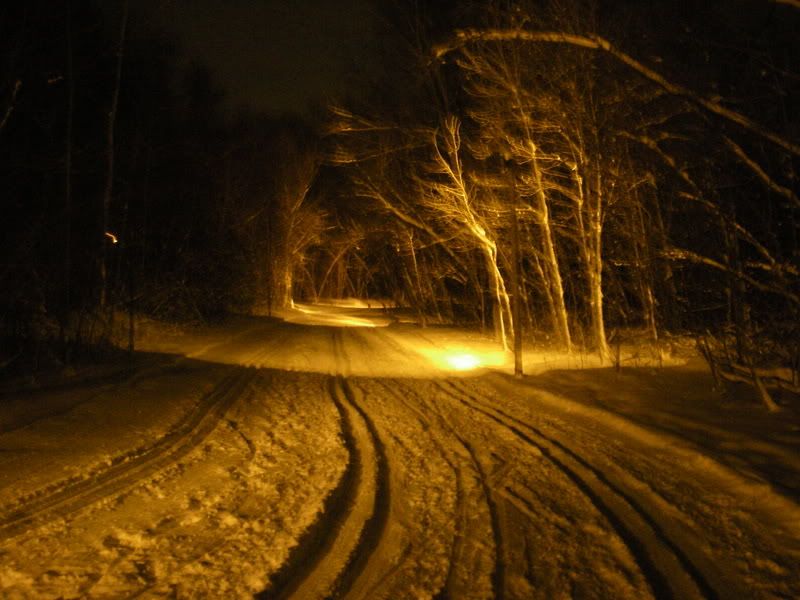
Was able to get out for some skiing last night. The lights are on until 10pm so after I finished catching up on some snow plowing, I had the last hour of lighting all to myself. French Lake seems to be a popular place for "after work skiers", but around 8 or 9 they all head home. I managed to get on a 5 person relay team for the Mora "Vasaloppet". This event (I'm told its NOT a race, but an event) is in February, and if I am going to be required to ski at an "event" pace for 15k, I am going to have to get out most every evening and do some conditioning. Dave has done a recent post on this "event" we are signed up for.
I did manage to get the kick wax on the ski's almost perfect last night, even with the fresh snow the uphills went went really well.
Wednesday, December 19, 2007
Madison WI

A recent article in Men's Health Living placed Madison WI number 1 on list for the best place to live for young men. One can expect to breathe deeper, and live 3.5 years longer. They used 10 different data sets including those mentioned, along with education levels, household incomes, and cost of living. This is just one more reason to be sure to add Canoecopia to the calender. Derrick did a recent post mentioning the list of presenters, it looks to be another great event. I did notice he is on the list for planning "Your First Expedition". I'll be there!
Monday, December 17, 2007
Sunday Pool Sessions
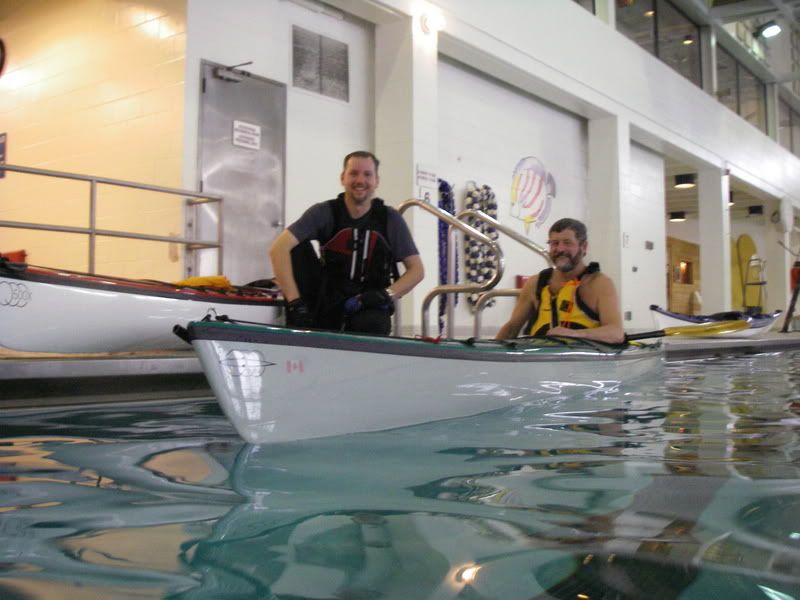
Finally was able to get to a pool session. It felt good to get back in the boat and work on some rolls, its been awhile! I need to add a good static brace to my list of can-do, along with the narsaq roll. Those two will be my goals for the Winter pools practice sessions.
That's John and Aras, the two QCC paddlers.
Friday, December 7, 2007
Nordkapp
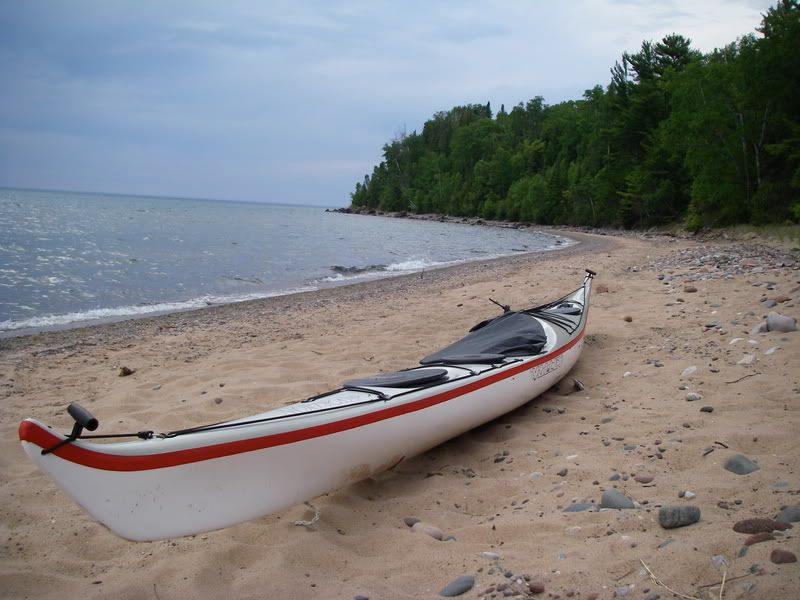
The ice is now covering all the lakes where I spent the last season paddling the new Valley Nordkapp. It was a challenging time for me in a couple of ways; first, I was determined to continue grow as a paddler, by earning ACA certification as an instructor, and to gain a higher comfort level in wind and waves on Lake Superior. I figured the Nordkapp would be the perfect boat for just that. I wasn’t prepared for how tippy the boat felt at first. I had spent the three years prior to this in an NDK Romany HV, formerly the Poseidon. Which by the way is a great boat, I still have it. I remembered the first time I sat in the Romany It felt the same way. I am average build, 6ft, and about 200 lbs. Add some gear and the number goes up to around 210 lbs. I would’ve thought my weight would be enough to calm the boat down in reflection waves, but it needs at least another 40lbs to settle it down in the water. At the 250lb range the boat is very solid. I’ve noticed all boats I’ve paddled have the same tendencies; it’s just that I feel the Nordkapp has enough liveliness in the hull to keep my full attention with an empty boat. A simple thing like retrieving a camera out of a PFD pocket, and taking some pictures, suddenly becomes a challenge in anything more than calm conditions. One of my paddling companions was quite apprehensive about handing me his $800 camera while on a Lake Superior day trip.
So this is not a boat for a 1st or 2nd year paddler, the initial tippy nature of the boat would put off a lot of folks. When I first started paddling the Nordkapp, I found testing how far I could edge the boat over would usually end up with the inevitable quick brace, or even the occasional capsize. Then quickly roll back up hopefully before anyone witnessed the untimely event. I was fortunate enough to be right next to Alex one afternoon while on one of the city lakes when I did a “quick roll”, only to see his puzzled look and “what was that?” The reward for learning the subtle edge control on the Nordkapp, is a very maneuverable boat, it turns very easily, and has the same good edging qualities either empty or loaded. Usually a maneuverable boat doesn’t track well with out using the skeg, but in calm conditions, the Nordkapp tracks well loaded or light without using the skeg.
We had a seasick paddler while on a weekend trip on Superior; he was having a hard time staying upright in the wind and waves. We stuck a paddle float on each end of his paddle, and tied on to him for a tow. I hooked up in the middle of a tandem tow, and the boat handled it beautifully. So far the biggest conditions I’ve gotten into with the Nordkapp were 3ft waves, and 20kt winds. The boat seems to be more comfortable in bigger waves than the choppy 1 to 2 footers or reflection waves off rocky shorelines. Here again, with the added weight of all the necessary gear for a weekend on the islands, the boat will settle into the water nicely. Add some wind, and the skeg becomes a real nice feature. I’ve found the boat to be sensitive to the slightest change in how much skeg is used. The boat can be paddled without, but the constant sweep strokes, and the subtle nature of edging the boat to control wind cocking, makes the skeg almost a necessity at my skill level. It is predictable in winds, and I’ve never felt I couldn’t control a heading as long as the skeg was working. The skeg adds quite a bit of stability while underway. If you reach down and quickly raise the skeg while at a good speed, you feel the skeg release the water as the boat quickly starts heading upwind.
When I first picked up the boat, the skeg was very stiff to operate. When I used it on an Apostle Island trip this spring, I forgot the skeg was down when I pulled the boat up on shore, and kinked the cable. I spent the rest of the trip with the skeg jammed at half way. What I should have done right away was remove the cable and lubricate it with some LPS 1 or a similar lubricant, I don’t know what Valley recommends, but LPS products have worked well for me on aircraft cables. I also now keep some repair tools, and hardware on trips, in case of another incident with the cable, even though it has worked flawlessly since I lubed it. The only problem I have with it now, is I tend to hit the control lever on occasion while paddling. If the lever were flush with the deck, this wouldn’t happen.
The Nordkapp is not the high volume boat like I thought an expedition boat would be. It is only slightly more than the Romany HV, but the real nice feature is the oval hatches. I will have to admit, I don’t have the backpacker mentality. I like to bring along things that make the trip comfortable … my Dutch oven comes to mind. A Dutch oven just will not fit in a Romany. The rear hatch skeg area is very long and narrow, perfect for a rolled up tarp, and some tent poles. I usually stow a folding saw there also. The day hatch is quite a bit smaller than the Romany’s, that’s ok; the main rear hatch is bigger because of it.
All the hatch covers are absolutely watertight. Never have I had a drop of water leak in, even when the covers are not pushed on tight with the secondary seal. I added some rope to attach the covers to the boat just in case I forget to fasten one correctly; these are great for grabbing hold of for removal, because with the secondary seal they can be tough to get off, especially with cold fingers. For engaging the secondary seal, I’ve found the end of my paddle works much better than trying to push it down with my fingers. The bulkheads came vented on this boat; a small hole is drilled through each bulkhead to allow the air to equalize on hot, or cold days. This was something I had to do to the Romany to keep the hatch covers from bulging in or out, as the case may be.
The Nordkapp is fast; keeping up with a group is not a workout. I haven’t used a gps for any speed checks, but paddling comfortably in a group with similar skill levels is as good a speed check as any. I did try a wing paddle one Saturday morning, I found it great fun, if I wasn’t so pleased with the Greenland style paddle, I would try switching to a wing paddle. The Nordkapp with an Epic wing blade could be a good match. A Werner Ikelos is another great paddle for getting the boat up to speed quickly, then with a relaxed pace, the Nordkapp is easily kept at a nice cruising speed. Most of my paddling has been with a lightweight carbon Greenland paddle made here in the Twin Cities by my friend Ron Stienwall at Novorca paddles. I’ve never felt at a disadvantage with the Nordkapp and a Greenland paddle, while last year on an eight-day trip with the fully loaded Romany and a Greenland paddle, I had a real hard time keeping up with the group.
So this is not a boat for a 1st or 2nd year paddler, the initial tippy nature of the boat would put off a lot of folks. When I first started paddling the Nordkapp, I found testing how far I could edge the boat over would usually end up with the inevitable quick brace, or even the occasional capsize. Then quickly roll back up hopefully before anyone witnessed the untimely event. I was fortunate enough to be right next to Alex one afternoon while on one of the city lakes when I did a “quick roll”, only to see his puzzled look and “what was that?” The reward for learning the subtle edge control on the Nordkapp, is a very maneuverable boat, it turns very easily, and has the same good edging qualities either empty or loaded. Usually a maneuverable boat doesn’t track well with out using the skeg, but in calm conditions, the Nordkapp tracks well loaded or light without using the skeg.
We had a seasick paddler while on a weekend trip on Superior; he was having a hard time staying upright in the wind and waves. We stuck a paddle float on each end of his paddle, and tied on to him for a tow. I hooked up in the middle of a tandem tow, and the boat handled it beautifully. So far the biggest conditions I’ve gotten into with the Nordkapp were 3ft waves, and 20kt winds. The boat seems to be more comfortable in bigger waves than the choppy 1 to 2 footers or reflection waves off rocky shorelines. Here again, with the added weight of all the necessary gear for a weekend on the islands, the boat will settle into the water nicely. Add some wind, and the skeg becomes a real nice feature. I’ve found the boat to be sensitive to the slightest change in how much skeg is used. The boat can be paddled without, but the constant sweep strokes, and the subtle nature of edging the boat to control wind cocking, makes the skeg almost a necessity at my skill level. It is predictable in winds, and I’ve never felt I couldn’t control a heading as long as the skeg was working. The skeg adds quite a bit of stability while underway. If you reach down and quickly raise the skeg while at a good speed, you feel the skeg release the water as the boat quickly starts heading upwind.
When I first picked up the boat, the skeg was very stiff to operate. When I used it on an Apostle Island trip this spring, I forgot the skeg was down when I pulled the boat up on shore, and kinked the cable. I spent the rest of the trip with the skeg jammed at half way. What I should have done right away was remove the cable and lubricate it with some LPS 1 or a similar lubricant, I don’t know what Valley recommends, but LPS products have worked well for me on aircraft cables. I also now keep some repair tools, and hardware on trips, in case of another incident with the cable, even though it has worked flawlessly since I lubed it. The only problem I have with it now, is I tend to hit the control lever on occasion while paddling. If the lever were flush with the deck, this wouldn’t happen.
The Nordkapp is not the high volume boat like I thought an expedition boat would be. It is only slightly more than the Romany HV, but the real nice feature is the oval hatches. I will have to admit, I don’t have the backpacker mentality. I like to bring along things that make the trip comfortable … my Dutch oven comes to mind. A Dutch oven just will not fit in a Romany. The rear hatch skeg area is very long and narrow, perfect for a rolled up tarp, and some tent poles. I usually stow a folding saw there also. The day hatch is quite a bit smaller than the Romany’s, that’s ok; the main rear hatch is bigger because of it.
All the hatch covers are absolutely watertight. Never have I had a drop of water leak in, even when the covers are not pushed on tight with the secondary seal. I added some rope to attach the covers to the boat just in case I forget to fasten one correctly; these are great for grabbing hold of for removal, because with the secondary seal they can be tough to get off, especially with cold fingers. For engaging the secondary seal, I’ve found the end of my paddle works much better than trying to push it down with my fingers. The bulkheads came vented on this boat; a small hole is drilled through each bulkhead to allow the air to equalize on hot, or cold days. This was something I had to do to the Romany to keep the hatch covers from bulging in or out, as the case may be.
The Nordkapp is fast; keeping up with a group is not a workout. I haven’t used a gps for any speed checks, but paddling comfortably in a group with similar skill levels is as good a speed check as any. I did try a wing paddle one Saturday morning, I found it great fun, if I wasn’t so pleased with the Greenland style paddle, I would try switching to a wing paddle. The Nordkapp with an Epic wing blade could be a good match. A Werner Ikelos is another great paddle for getting the boat up to speed quickly, then with a relaxed pace, the Nordkapp is easily kept at a nice cruising speed. Most of my paddling has been with a lightweight carbon Greenland paddle made here in the Twin Cities by my friend Ron Stienwall at Novorca paddles. I’ve never felt at a disadvantage with the Nordkapp and a Greenland paddle, while last year on an eight-day trip with the fully loaded Romany and a Greenland paddle, I had a real hard time keeping up with the group.
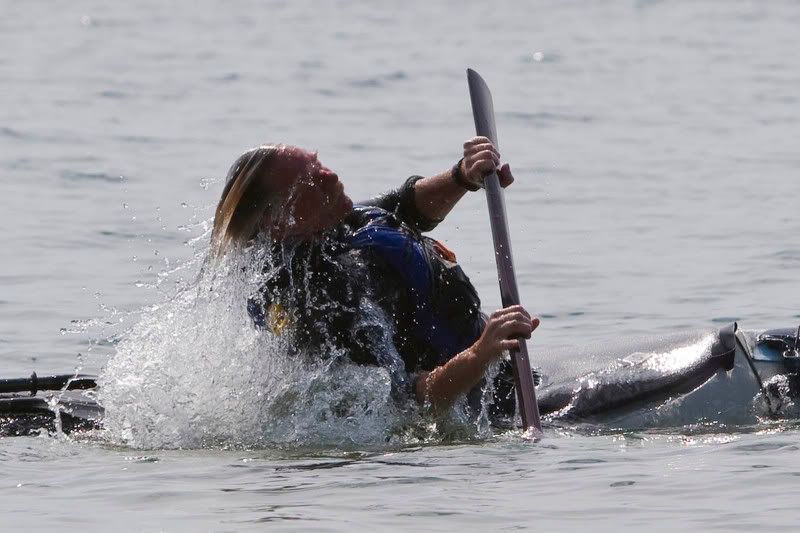
I couldn’t finish this without talking about how the boat rolls, one of my favorite pastimes on a warm evening after work, is to hit a local lake, and practice different Greenland style rolls. The Romany has a lower back deck, and is easier for a basic sweep roll, or an angel roll. It has a flatter hull, with harder chines than the Nordkapp. What makes the Nordkapp more difficult for me is the round hull, it has to be rolled all the way up, not just to the point a flatter hull takes over and helps finish the roll. A reverse sweep seems easier, I’m not sure if it’s my technique, or just the nature of the roll. A sculling brace is different with a round hull because there really isn’t a well-defined balance point; it just seems to be somewhat neutral anywhere during the 360 degrees of a roll. I asked Alex to try out the boat, and he had no problem doing a variety of Greenland rolls, including a balance brace, and hand rolls.
The Nordkapp has challenged me this first season, and will continue to make me work to be a better paddler for some time to come. When I paddled Alex’s Nordkapp LV; I found it to be a great boat. In fact right after I paddled it, I made the comment “I may have to sell the Nordkapp, in favor of the LV”. The jury is still out on that one, the Romany HV I’d sell and go for the LV for sure. But I may have to hang onto the Nordkapp. I would like to see how the LV would perform with me, and 50lbs of gear. I’m not an expedition paddler, and don’t need an expedition boat. But I do spend a good deal of time taking long weekends on Lake Superior, and the occasional six to eight day trips. For me, the Nordkapp is a better choice for that job. Besides, it’s really a pretty boat!
I found so very little information on the Valley Nordkapp when I was making my own decisions on a new boat, and it is next to impossible to find one to demo. This isn’t so much a kayak review, as it is my own impressions on the boat, hopefully this will add something positive to the information that’s out there on Valley’s Nordkapp.
The Nordkapp has challenged me this first season, and will continue to make me work to be a better paddler for some time to come. When I paddled Alex’s Nordkapp LV; I found it to be a great boat. In fact right after I paddled it, I made the comment “I may have to sell the Nordkapp, in favor of the LV”. The jury is still out on that one, the Romany HV I’d sell and go for the LV for sure. But I may have to hang onto the Nordkapp. I would like to see how the LV would perform with me, and 50lbs of gear. I’m not an expedition paddler, and don’t need an expedition boat. But I do spend a good deal of time taking long weekends on Lake Superior, and the occasional six to eight day trips. For me, the Nordkapp is a better choice for that job. Besides, it’s really a pretty boat!
I found so very little information on the Valley Nordkapp when I was making my own decisions on a new boat, and it is next to impossible to find one to demo. This isn’t so much a kayak review, as it is my own impressions on the boat, hopefully this will add something positive to the information that’s out there on Valley’s Nordkapp.
Thursday, December 6, 2007
Wednesday, December 5, 2007
Subscribe to:
Comments (Atom)

